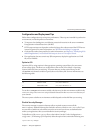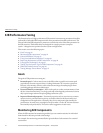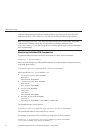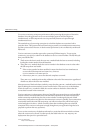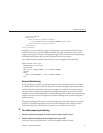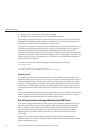
source are going to be involved in a transaction. If a database participates in some distributed
transactions, but mostly in local or single database transactions, it is advisable to register two
separate JDBC resources and use the appropriate resource in the application.
Congure JDBC Resources as One-Phase Commit Resources
To improve performance of transactions involving multiple resources, the Application Server
uses last agent optimization (LAO), which allows the conguration of one of the resources in a
distributed transaction as a one-phase commit (1PC) resource. Since the overhead of
multiple-resource transactions is much higher for a JDBC resource than a message queue, LAO
substantially improves performance of distributed transactions involving one JDBC resource
and one or more message queues. To take advantage of LAO, congure a JDBC resource as a
1PC resource. Nothing special needs to be done to congure JMS resources.
In global transactions involving multiple JDBC resources, LAO will still improve performance,
however, not as much as for one JDBC resource. In this situation, one of the JDBC resources
should be congured as 1PC, and all others should be congured as XA.
Use the Least Expensive Transaction Attribute
Set the following transaction attributes in the EJB deployment descriptor le (ejb-jar.xml).
Options are listed from best performance to worst. To improve performance, choose the least
expensive attribute that will provide the functionality your application needs:
1. NEVER
2. TX_NOTSUPPORTED
3. TX_MANDATORY
4. TX_SUPPORTS
5. TX_REQUIRED
6. TX_REQUIRESNEW
Using Special Techniques
Special performance-enhancing techniques are discussed in the following sections:
■
“Version Consistency” on page 39
■
“Request Partitioning” on page 41
Version Consistency
Note – The technique in section applies only to the EJB 2.1 architecture. In the EJB 3.0
architecture, use the Java Persistence API (JPA).
EJB PerformanceTuning
Chapter2 • TuningYourApplication 39



